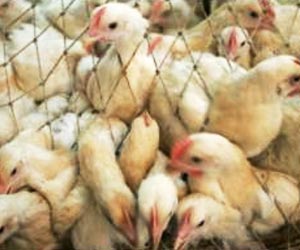In a path-breaking study, scientists at the U.S. Department of Energy's (DOE) Argonne National Laboratory working with scientists from China and Singapore, have unravelled the structure
The structure of the most important protein complexes of the H5N1 virus, the most common strain of bird flu has been identified by scientists at the U.S. Department of Energy's (DOE) Argonne National Laboratory in collaboration with scientists from China and Singapore.
This may be considered a key discovery towards the cure for the most common strain of avian influenza, or "bird flu," the potential pandemic that has claimed more than 200 lives and infected nearly 400 people in 14 countries since it was identified in 2003.It is known that all viruses, including H5N1, contain only a small number of proteins that govern all of the viruses' functions. In H5N1, perhaps the most important of these proteins is RNA polymerase, which contains the instructions that allows the virus to copy itself along with all of its genetic material.
The current study focussed on H5N1's RNA polymerase protein, which contains three subunits: PA, PB1 and PB2 and after performing X-ray crystallography on the protein crystals at Argonne's Structural Biology Center 19ID beamline at the Advanced Photon Source, the researchers saw a surprising resemblance in the protein structure's image.
"When we mapped out the PA subunit, it looked very much like the head of a dragon. One domain looked like the dragon's brains, and the other looked like its mouth," said Argonne biophysicist Andrzej Joachimiak.
All three of the subunits of the protein assemble themselves in a particular configuration during RNA replication - the phase during which the virus "reproduces". To facilitate this congregation, the researchers determined the end of the PB1 subunit has to insert itself and bind to the "dragon's mouth" part of the PA subunit.
Joachimiak said that this bizarre relationship between the two subunits could instigate a number of different therapies or vaccines for H5N1 that rely on muzzling the "dragon's" jaws with another molecule or chemical compound that would block the PB1 subunit's access to the PA site.
Advertisement
And now Joachimiak hopes to more precisely identify the types of compounds that could inhibit RNA replication in H5N1 by looking at the atomic-level grooves and pockets within the PA "mouth" region.
Advertisement
Source-ANI
RAS/L








